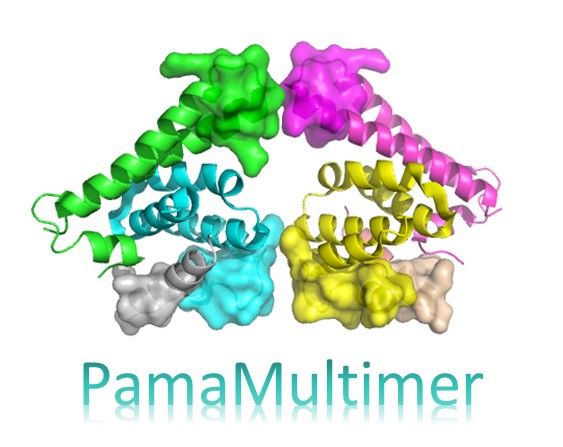
PamaMultimer Server
Research Paper
PamaMultimer: A modular method for multimeric protein-protein interaction interface prediction
Download Paper
Abstract: Although the protein monomer structure can be accurately predicted by alphafold2, the structure prediction of multimeric protein complex is still an urgent problem to be solved. Alphafold3 and alphafold multimer attempted to predict the structure of multimeric protein complexes and simulate the interaction between proteins and small molecules, but the results were not satisfactory. One of the main reasons for the above situation is that the interaction interface prediction is not accurate. To solve this problem, we proposed a multimeric protein complex interaction prediction method called PamaMultimer. In our research, we term the aggregation of amino acids in proximity to the central amino acid as a "patch". By considering the solvent accessible surface area and internal contact area of the patch, we give the most likely interface patch and interface amino acids. It is worth mentioning that we used all the multimeric protein complexes (chain number greater than 2, monomers are proteins) that can be searched in the RCSB pdb library for testing, and the success rate and qualification rate of interface patch prediction reached 64.74% and 96.07%. The comprehensive and unomitted dataset strongly supports the accuracy and effectiveness of PamaMultimer. In addition, on the challenging antigen-antibody dataset, PamaMultimer predicted the top 10 binding sites with 48% accuracy. It has obvious advantages in comparison with the state-of-the-art methods. Different from the method of predicting amino acid binding sites, we use the patch as a whole to predict the interface. This helps to identify clusters of amino acids that work together to perform a function, which may help biologists make valuable discoveries. The code and data are available at https://github.com/hyx-1/PamaMultimer.
IMPORTANT NOTICE: You must input your email address in the email field to receive results!
Introduction
This is an online server to implement PamaMultimer, giving a series of multimeric protein complex residue patches which may contain possible binding sites of these proteins.
Contact
If you have any questions during operation, please contact us:
- Email: 2021103691@ruc.edu.cn
- Lab: Mathematical Intelligence Application Laboratory
Usage Instructions
- Input your email address in the email field (required for results)
- Upload a single PDB file or a ZIP file containing multiple PDB files
- Click Submit button to process your file
- When your job-ID appears, click Run button
- Wait for the download button to appear
- Download the ZIP result file containing individual result files
Results Interpretation
- Results are divided based on each protein chain
- Top 3 highest-scoring patches are selected for each chain
- Patches are considered to be the most likely binding sites
- Visualization files use specific colors to label different patches
Submit Protein Structures
Upload your PDB files for multimeric protein interaction prediction
File uploaded successfully!
Please select a file and enter your email before submitting.
Upload Status
No file uploaded yet.
You must provide your email address to receive the results !!!
Then Click [Upload file] and then Click [Submit] !
Run Analysis
Execute PamaMultimer analysis on uploaded files
Analysis Results
results will be sent to your email.